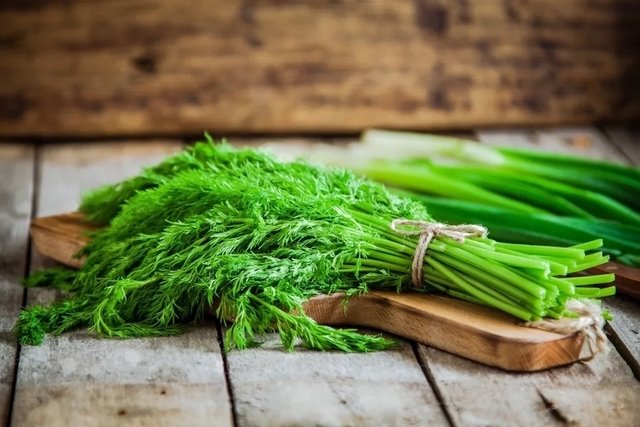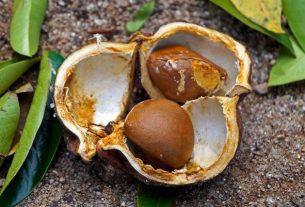Dill is an aromatic herb with medicinal properties that help cure various illnesses such as flu, cold and nasal congestion.
Additionally, dill can be used to alleviate digestive disorders, such as nausea and gas, and reduce menstrual symptoms, and can be used to relieve colic in babies.
The scientific name for dill is Aneethun graveolens and the most used parts of this plant are the leaves and seeds, which can be purchased in health food stores and some compounding pharmacies.

What is it for
Due to its properties, dill can be used in different situations:
1. Improve digestion
Dill is great for digestion, as it helps reduce cramps and gas, as well as relieving nausea, diarrhea and constipation. It can also be used to stimulate the baby’s appetite and relieve colic. See the causes and how to combat colic in babies.
2. Promote mental health
Dill helps relieve tiredness caused by sleep disturbances, increasing concentration and memory. Furthermore, dill is a relaxing herb and can be used to treat insomnia and digestive disorders caused by stress.
3. Relieve cough
Dill has antispasmodic and expectorant properties and, therefore, can also be used to treat dry and productive coughs and also associated with asthma treatments.
4. Decrease pain
The volatile oils present in both dill leaves and seeds relax smooth muscles and are therefore useful in relieving tension and pain in the body.
Dill also has analgesic and anti-inflammatory properties that help relieve swelling, arthritis and ear pain, for example.
5. Improve immunity
Some studies indicate that dill also has antibacterial and antifungal properties against fungus. Candida sp. Furthermore, it has also been proven that dill can inhibit the formation of malignant tumors.
6. Combat fluid retention
Dill is good for the urinary system because it has diuretic properties, increasing the amount of urine eliminated and helping to prevent fluid retention, reducing inflammation, swelling or a feeling of heaviness in the body.
7. Regulate menstruation
Dill can also be used in painful periods, as it helps regulate menstruation. In the East, it is a plant widely used by women before giving birth, to facilitate the birth of the baby. Furthermore, it also increases milk supply in mothers who are breastfeeding.
8. Take care of your heart health
Dill could help reduce triglycerides and total and LDL cholesterol, as it is rich in flavonoids, tannins and terpenes, which are compounds with antioxidant properties, preventing the emergence of heart diseases, such as stroke, atherosclerosis and heart attack.
Nutritional information
The following table indicates the nutritional composition of 100 grams of fresh dill:
How to use
Dill can be used in cooking, chopping the leaves to use as a seasoning in different dishes, such as fish, vegetables or preparing sauces.
Furthermore, the seeds can also be used, whole or ground, on top of bread before baking, or mixed into a salad, for example.
Dill recipes
Some recipes that can be prepared with dill are:
1. Dill tea
Dill tea is the main way to consume this aromatic herb and can be easily prepared at home.
Ingredients
- 1 tablespoon of dill leaves and seeds;
- 1 cup of boiling water.
Preparation mode
Place 1 tablespoon of dill leaves and seeds in a cup of boiling water. Let it rest for 15 minutes, strain and drink afterwards.
2. Pesto sauce with dill
Ingredients
- 30 grams of fresh dill;
- 1 clove of garlic;
- 30 grams of roasted almonds;
- 30 grams of parmesan;
- 150 mL of olive oil;
- Sal.
Preparation mode
Cut the dill and place it in a container to grind together with the garlic. Then add the almonds, grated Parmesan cheese, olive oil and salt and grind until you obtain a paste.
Bibliography
- U.S. DEPARTMENT OF AGRICULTURE FOODDATA . Dill weed, fresh. Disponível em: <https://fdc.nal.usda.gov/fdc-app.html#/food-details/172233/nutrients>. Acesso em 06 jan 2023
- HEIDARIFAR Reza et al. Effect of Dill (Anethum graveolens) on the severity of primary dysmenorrhea in compared with mefenamic acid: A randomized, double-blind trial. Journal of Research in Medical Sciences. 1. 326-330, 2014
- HAIDARI Fatemeh et al. The effects of Anethum graveolens (dill) powder supplementation on clinical and metabolic status in patients with type 2 diabetes. BMC. 21. 1-11, 2020
- MASOUMEH Sadeghi et al. Anethum graveolens L. (Dill) Effect on Human Lipid Profile: An Updated Systematic Review. Current Problems in Cardiology. 47. 11; 2022

Sign up for our newsletter and stay up to date with exclusive news
that can transform your routine!
Warning: Undefined array key "title" in /home/storelat/public_html/wp-content/plugins/link-whisper-premium/templates/frontend/related-posts.php on line 12
Warning: Undefined array key "title_tag" in /home/storelat/public_html/wp-content/plugins/link-whisper-premium/templates/frontend/related-posts.php on line 13



